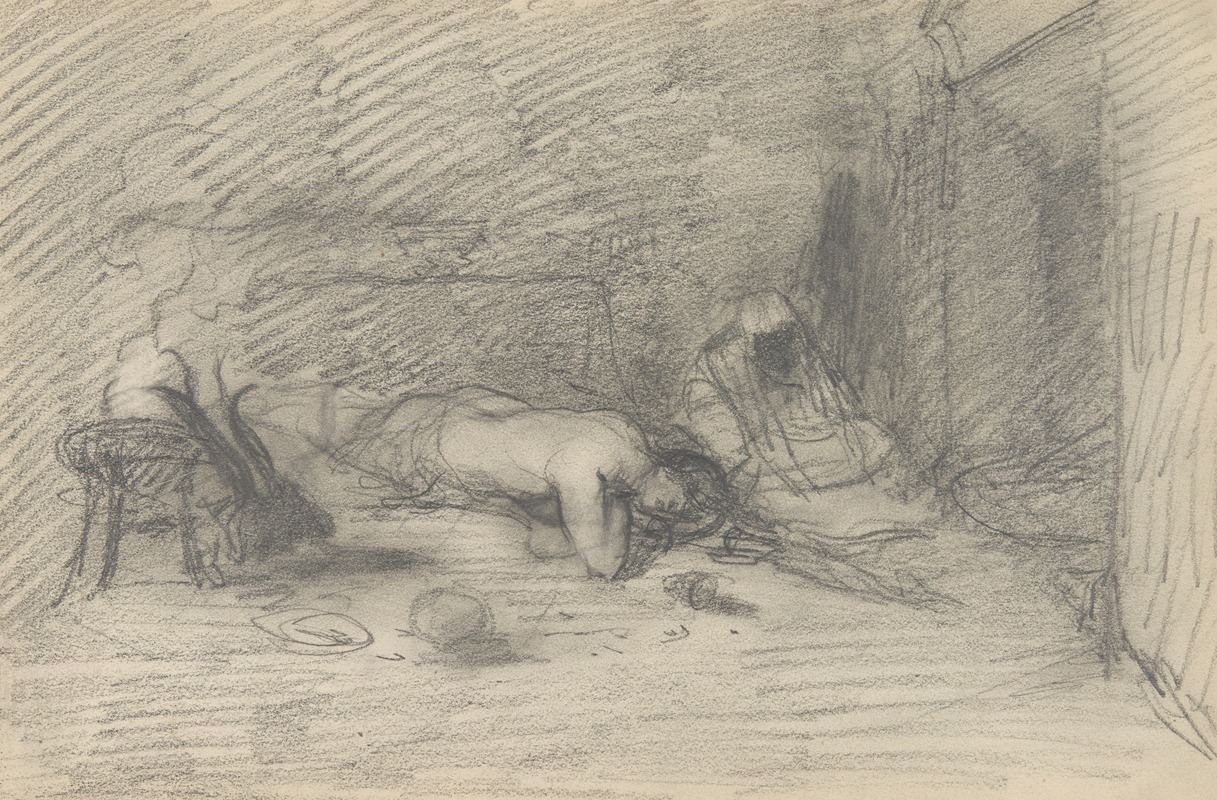
scena śmierci młodej dziewczyny
A hand-painted replica of Henryk Siemiradzki’s masterpiece scena śmierci młodej dziewczyny, meticulously crafted by professional artists to capture the true essence of the original. Each piece is created with museum-quality canvas and rare mineral pigments, carefully painted by experienced artists with delicate brushstrokes and rich, layered colors to perfectly recreate the texture of the original artwork. Unlike machine-printed reproductions, this hand-painted version brings the painting to life, infused with the artist’s emotions and skill in every stroke. Whether for personal collection or home decoration, it instantly elevates the artistic atmosphere of any space.
"Scena śmierci młodej dziewczyny" (The Death of a Young Girl) is a painting by the Polish artist Henryk Siemiradzki, who was known for his large-scale historical and genre scenes. Siemiradzki was born on October 24, 1843, in the village of Novobelgorod, in the Kharkov Governorate of the Russian Empire (now Ukraine), and he became one of the most prominent painters of the late 19th century.
The painting "Scena śmierci młodej dziewczyny" was completed in 1872. It is an oil on canvas work that exemplifies Siemiradzki's meticulous attention to detail and his ability to convey dramatic narratives through his art. The painting depicts a poignant and somber scene of a young girl's death, capturing the emotional gravity of the moment.
Siemiradzki's work is characterized by its classical themes and often draws inspiration from ancient history and mythology. In "Scena śmierci młodej dziewczyny," he employs a realistic style to portray the figures and their surroundings, which is typical of his approach to painting. The composition of the painting is carefully arranged to focus the viewer's attention on the central figure of the young girl, who is surrounded by mourners.
The artist's use of light and shadow in this painting is particularly noteworthy. Siemiradzki skillfully uses light to highlight the girl's face and body, creating a stark contrast with the darker background. This technique not only enhances the emotional impact of the scene but also demonstrates Siemiradzki's mastery of chiaroscuro.
Henryk Siemiradzki was educated at the Imperial Academy of Arts in Saint Petersburg, where he studied under the guidance of prominent artists such as Karl Bryullov and Fyodor Bruni. After completing his studies, he traveled extensively throughout Europe, visiting Italy, France, and Germany, where he was influenced by the works of the Old Masters and contemporary artists.
Throughout his career, Siemiradzki received numerous accolades and recognition for his work. He was awarded the title of Academician by the Imperial Academy of Arts and became a member of several prestigious art institutions, including the Royal Academy of Arts in London and the Accademia di San Luca in Rome.
"Scena śmierci młodej dziewczyny" is housed in the National Museum in Warsaw, Poland. The painting is part of the museum's extensive collection of 19th-century Polish art and is considered one of Siemiradzki's significant works. It continues to be admired for its technical excellence and emotional depth.
Henryk Siemiradzki's contributions to the art world extend beyond his paintings. He was also involved in the design of theatrical sets and costumes, and he played a role in the cultural life of his time. Siemiradzki passed away on August 23, 1902, in Strzałków, Poland, leaving behind a legacy of artistic achievement that continues to be celebrated today.
In summary, "Scena śmierci młodej dziewczyny" by Henryk Siemiradzki is a masterful depiction of a tragic moment, rendered with great skill and emotional sensitivity. The painting remains an important work within the context of 19th-century Polish art and exemplifies Siemiradzki's talent for combining historical themes with a realistic style.


















